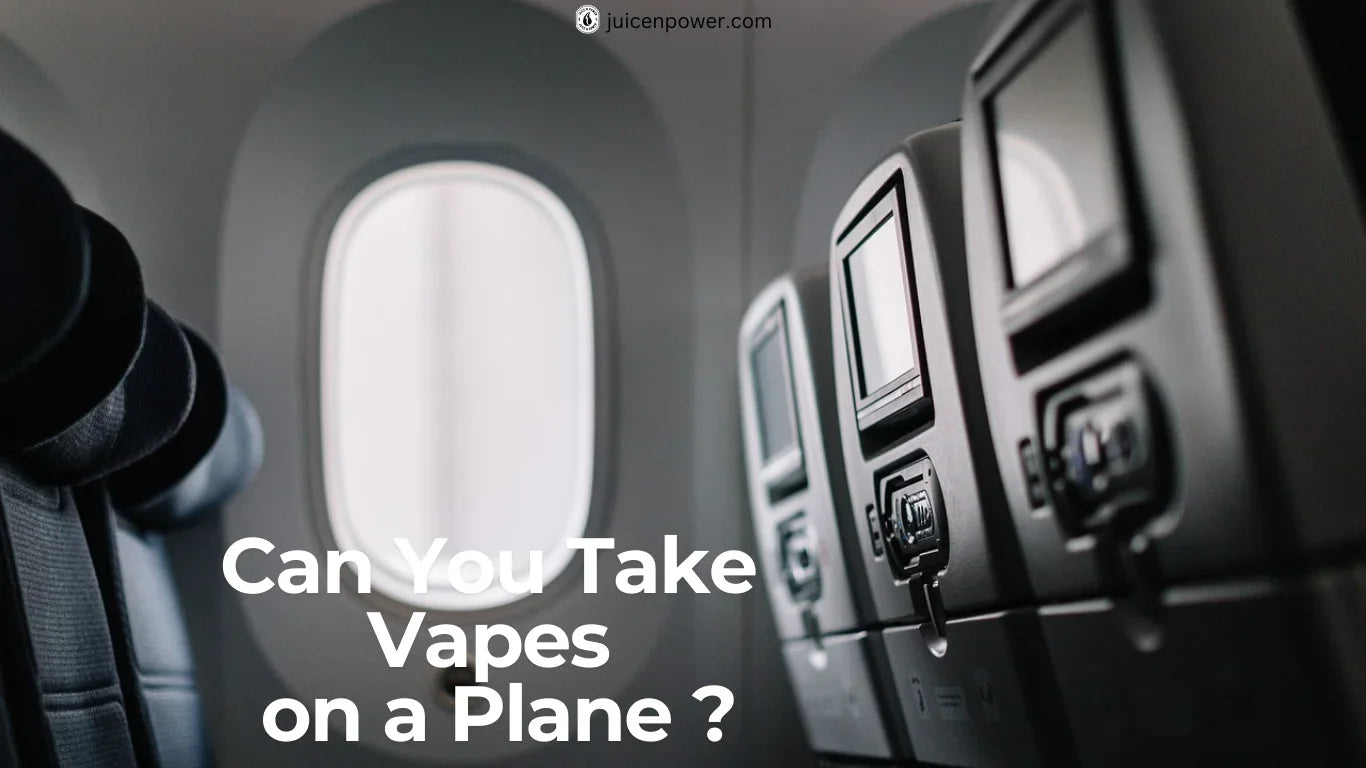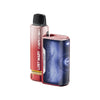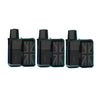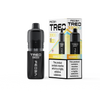For vapers, the thought of navigating airport security and airline regulations can sometimes feel like turbulence before takeoff. Can you take vapes on a plane? The quick answer is yes — but with important rules and restrictions. Whether you’re planning a weekend getaway or a long-haul international flight, understanding the do’s and don’ts of travelling with your vape is essential.
If you’re wondering how many vapes you can take on a plane, the answer is also subject to specific limits set by airlines and the Civil Aviation Authority (CAA). The rules vary significantly between countries and airlines, making it crucial to stay informed before you pack your bags.
This comprehensive guide is here to take the guesswork out of travelling with your vape in 2025. So, buckle up and get ready to learn all about travelling with vapes.
Can You Fly With Vapes?
Yes, you can fly with vapes. However, it’s crucial to follow CAA guidelines and individual airline regulations. Vaping devices and e-liquids are allowed in carry-on luggage, but you can’t pack them in checked baggage. Airlines and airports worldwide have strict rules regarding these devices, and knowing what is and isn’t allowed can help you avoid unnecessary delays or confiscation of your vape.
Can You Take Vapes on a Plane?
When flying with a vape, it’s essential to understand the general rules regarding carry-on and checked baggage. Also, remember that individual airlines may have their own additional regulations, so always check with your airline before your flight. Vapes are allowed in carry-on baggage, but the CAA requires you to pack them properly. This includes ensuring that your e-liquid does not exceed 100ml (3.4 ounces) in volume and is packed in a quart-sized clear plastic bag for inspection.
How Many Vapes Can You Take on a Plane?
If you’re travelling with disposable vapes, you might be wondering, “How many vapes can you take on a plane?” While there’s no official limit on the number of disposable vapes, the CAA recommends that you pack them in your carry-on luggage to avoid the risk of damage or malfunction in checked baggage.
CAA Guidelines for Disposable Vapes
- Carry-on limit: You are generally allowed to carry multiple disposable vapes, as long as they fit within your carry-on baggage and comply with the liquid restrictions for e-liquids.
- Quantity restrictions: If your disposable vapes contain e-liquid, the liquid must comply with CAA’s rule of 100ml (3.4 ounces) or less per container. While the liquid inside most disposable vapes falls within this limit, carrying larger e-liquid bottles might create an issue.
Can I Vape on a Plane?
You cannot vape on any commercial flight. This rule applies to both e-cigarettes and vaping devices of any kind. Vaping on a plane is prohibited due to the risks it causes to passengers and the aircraft’s safety systems. The use of any form of smoking device, including vapes, is not allowed in flight.
Penalties for Vaping on a Plane
If you’re caught vaping on a plane, you could face significant penalties, including fines, arrest, and being banned from flying with that airline in the future. There may also be legal consequences depending on the country in which the airline operates.
Can You Vape in an Airport?
While vaping is prohibited on flights, airports have different policies on vaping. Many airports allow vaping in designated areas, while others have completely banned it. Here’s what you need to know:
Designated Vaping Areas
Many international airports provide designated smoking and vaping areas where travellers can vape freely. These areas are often located away from main terminals, ensuring safety and comfort for other passengers. These spaces are ideal for those who are in need of a quick vape session without violating airport policies.
However, their availability varies significantly depending on the airport’s layout and local laws. Before travelling, identify whether such areas exist at your departure or arrival airports.
Airport-specific Rules
Vaping policies vary from airport to airport. In some regions, you may not find any vaping areas, while in others, airports have accommodated the practice. Always check the airport’s vaping rules before arriving.
- Vape-friendly airports: Certain airports in the U.S., Europe, and Asia-Pacific regions allow vaping in clearly marked areas, often the same spaces designated for smoking.
- Strict no-vaping airports: Other airports have a blanket ban on vaping within their premises, including outdoor spaces. Breaking these rules may result in fines or even confiscation of your vaping device.
International Differences
Vaping regulations vary dramatically across the globe, and it’s crucial to be aware of the specific laws in each country. Some countries, like Singapore and Thailand, have strict rules regarding vaping even within airports. Always research airport-specific regulations before travelling.
Are There Any Countries Where Vaping Is Banned?
Yes, there are several countries where vaping is heavily restricted or banned outright. If you plan to travel internationally with your vape, it’s crucial to know the regulations of your destination. Laws regarding vape bans vary significantly from one country to another, and in some places, penalties for violating these laws can be severe.
Countries Where Vaping is Banned
While vaping has become popular in many parts of the world, several countries have taken a strict stance and imposed complete bans on e-cigarettes. These bans can apply to the sale, possession, and use of vaping devices and e-liquids, with significant penalties for violations. If you’re planning to travel to any of these destinations, you should be aware of the local regulations to avoid potential fines or legal issues. Below is the list of countries where vaping is banned:

Argentina, Bangladesh, Brazil, Brunei Darussalam, Cambodia, Ethiopia, Gambia, Hong Kong, Iraq, Jordan, Laos, Macau, Nicaragua, North Korea, Oman, Palau, Panama, Qatar, Seychelles, Sri Lanka, Suriname, Syria, Timor-Leste, Turkmenistan, Uganda, Uruguay, Vatican City, Venezuela
Countries Where Vaping or Vapes Are Restricted, Not Completely Banned
Vaping is not outright banned but is subject to strict regulations and limitations in some countries. These restrictions can vary widely, including limitations on where you can vape, age restrictions, or rules regarding the sale and importation of e-cigarettes and vaping products.
List of countries where vaping is restricted;
Lebanon, Mexico, Vietnam, Turkey, South Korea, Japan
Countries Where Selling, Purchasing, or Public Vaping Can Lead to Imprisonment
In some countries, the laws surrounding vaping are so strict that engaging in activities like selling, purchasing, or even vaping in public spaces can result in severe consequences. Below is the list of countries with strict vaping laws that can lead to imprisonment;
India, Philippines, Singapore, Taiwan, Thailand
Countries Where Vaping in Public Places Is Prohibited
Vaping regulations vary worldwide, with some countries enforcing strict rules against vaping in public places. Here’s a list of countries where vaping in public is prohibited to ensure compliance with local laws.
Barbados, Bermuda, Costa Rica, Guyana, Iran, Jamaica, Moldova, Paraguay, Russia, United Arab Emirates (inc. Dubai)
Countries Where Only Disposable Vapes Are Completely Banned
Some countries have implemented strict regulations specifically targeting disposable vapes, banning their sale and use entirely. Here’s a list of such countries.
Antigua, Barbuda, Bhutan
Vaping Regulations for Airlines and Airports
When travelling with a vape, understanding the rules regarding packing and carrying e-liquids is essential to ensure a smooth experience at the airport. While it’s generally permissible to bring vapes on flights, there are specific rules in place to ensure safety and compliance with regulations. Failure to follow these rules could result in delays, confiscations, or penalties.
Vape Devices
Always pack your vape in your carry-on luggage rather than your checked baggage. This is because checked luggage is not permitted for vaping devices due to safety concerns. The risk of fire or malfunction in the cargo hold, where the temperature and pressure fluctuate, makes it unsafe to transport vape devices in checked bags. Make sure your vape is easily accessible in your carry-on bag. During the security screening process, CAA officers may ask to inspect the device. Having it readily available ensures you avoid unnecessary delays while also complying with the rules.
E-liquids
When travelling with e-liquids, it’s important to remember that they fall under the same CAA liquid regulations as other liquids such as shampoo, lotions, or beverages. The CAA restricts the amount of liquid you can bring to 100 ml (3.4 oz) per container. If you’re carrying multiple bottles, make sure they are all under the 100 ml limit and can comfortably fit within a quart-sized bag.
How to Pack Vapes for Your Trips
To prevent any leaks or spills, make sure that your e-liquid bottles are tightly sealed. Air travel can cause changes in air pressure, which may lead to leaks if the bottles are not properly sealed. For added security, consider placing your e-liquids inside plastic bags or cushioned pouches. This will help avoid leaks and protect your vape equipment from damage due to impacts. Keeping your vape and e-liquids in separate, organized compartments in your carry-on bag makes them easy to access and minimizes any chances of accidents.
International Travel Considerations
Travelling internationally with vaping devices and e-liquids requires even more caution because each country has different laws and regulations. What might be acceptable in one nation could be banned or restricted in another. As such, it’s important to thoroughly research the vaping laws of your destination well before your trip.
Check Local Laws
When travelling abroad, always check the vaping laws in the specific country you’re visiting. Countries like the United States, Canada, and the European Union generally allow vaping, but local laws and regulations may vary at the city or regional level. On the other hand, places like Thailand and Singapore have harsh penalties for possession or use of vaping devices.
Researching local laws should be a crucial part of your travel planning. This can include checking government websites, reaching out to the embassy of the country you’re visiting, or asking locals for the most up-to-date information.
Customs Restrictions
Many countries have specific customs restrictions related to the importation of vaping devices and e-liquids. Some countries may restrict the amount of e-liquid that can be brought into the country, while others may ban the importation of any vape devices altogether. For example, some nations may allow the importation of e-cigarettes but limit the amount of nicotine or prohibit the use of certain e-liquid ingredients. Before you travel, make sure to familiarize yourself with the customs regulations of both your departure and arrival countries.
How to Pack Vapes for Air Travel?
Packing your vape devices and accessories properly is essential to avoid damage and leaks. By following a few simple best practices, you can ensure a hassle-free experience when travelling with your vape.
How to Pack Batteries?
Vape batteries are one of the most crucial components of your device, and airlines have specific rules for carrying them. For safety reasons, many airlines require that all spare lithium-ion batteries (the kind used in most vapes) be stored in your carry-on luggage. To prevent accidental short-circuiting, always store vape batteries in their original packaging or use a protective case.
A battery case is a must-have for anyone travelling with multiple batteries, as it keeps them safe and organized. If you’re carrying multiple batteries, try to keep them separated so that the terminals don’t come into contact with any metal objects, which can cause short circuits. It’s a good idea to keep your vape device turned off during the flight.
Storing E-liquids and Protecting Your Vape Device
Ensure your e-liquids are stored in compliance with liquid restrictions. Use a clear, resealable plastic bag and limit the amount of liquid to 100 ml per container. Many vapes can be fragile, and you don’t want to risk cracking the device or damaging the components during your journey. To avoid any damage to your vape device during travel, consider packing it in a protective case or padded pouch.
Essential Things to Consider for Vaping While Traveling
Airport and In-flight Vaping Rules
Vaping is strictly prohibited on all commercial flights. Airlines have clear policies against vaping, and this includes using e-cigarettes, vape pens, or any other devices that produce vapour. Many airports around the world have designated smoking or vaping areas where you can enjoy your vape before boarding your flight. However, not all airports have such spaces, and in some locations, vaping in non-designated areas is banned.
Be sure to check airport guidelines before your trip and follow any rules to ensure a smooth experience. If in doubt, it’s always safer to hold off on vaping until you’re at a designated area.
Vaping Etiquette in Different Cultures
In countries where vaping is widely accepted, such as the United States or the UK, you may find that vaping is often seen as a personal choice and not an issue of concern. However, in other countries, vaping may be seen as inappropriate or a public nuisance. In regions like Southeast Asia, for instance, places like Thailand, Vietnam, and Singapore have very strict regulations surrounding vaping, and public vaping is often illegal or considered a form of public disrespect.
In many places, it’s advisable to vape in private areas or areas where smoking is also allowed, like designated smoking rooms. If you’re unsure about where it is appropriate to vape, it’s best to refrain from vaping in public until you find a designated area.
Common Challenges Travelers Face When Traveling With Vapes
Dealing With Leaks and Spills
Pressure changes during the flight can cause e-liquids to leak from vape devices. To avoid this, make sure your vape is packed tightly and securely. Always ensure your vape tank is tightly sealed before travelling.
Battery and Device Malfunctions
Vapes are prone to malfunctioning during travel due to temperature fluctuations and pressure changes. Take extra batteries with you and keep your device turned off to avoid issues. You must pack extra batteries in their original cases to prevent them from short-circuiting and always store them in your carry-on bag.
Lack of Vaping Facilities
While vaping is allowed in many public areas, airports and aeroplane cabins generally don’t provide designated spaces for vaping. This can be frustrating for travellers who rely on their devices for nicotine.
Device Damage From Rough Handling
Vape devices, especially those with glass tanks, can be fragile and prone to breaking if not handled carefully. Airports and airlines may not always treat luggage gently, which can lead to cracks or damage to your device. To protect your vape from rough handling, consider placing it in a hard case.
What to Do If Your Vape Is Seized by Authorities?
Airports may seize vapes if they don’t meet the safety or legal requirements for travel. This can happen if you’re travelling to or from a country with strict vaping laws. If your vape is confiscated, ask the authorities for clarification on why it was taken and whether you can reclaim it. Some countries may allow you to retrieve your device after a penalty is paid.
If you believe your vape was wrongly confiscated, you can file an appeal or request a review. Some airports or countries may have procedures in place for disputing confiscations.
Travelling with vapes requires a thorough understanding of airport, airline, and country-specific regulations. By packing your vape correctly, respecting local laws, and following CAA and airline rules, you can safely enjoy vaping while travelling. Always research your destination’s vaping policies and make sure you understand the risks of bringing your devices into certain countries. Share this guide with fellow travellers to ensure smooth and safe journeys when flying with vapes.








